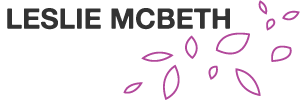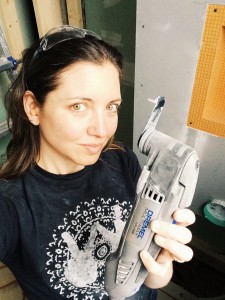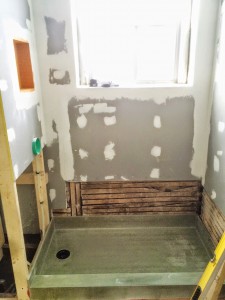As many of you know, over the past nine months, my husband and I have completely gutted and rebuilt our 130 year old home, that we loving call Lindner’s Hall. After tearing out 9 tonnes of plaster, lathe, flooring and more dust than you can possibly imagine, we thought “hey, this isn’t so hard.” Turns out, destroying things is easy. It’s putting things back together (and keeping them together) that’s hard. It’s frustrating, messy, riddled with failure. This is the story of how building my house reminded me of what it means to be a learner.
Electrician’s Daughter: Not Knowing Where to Start
There have been many, many times during this process when we have stalled because we didn’t know what to do. For someone who learns quickly and generally experiences very little stress, these stalling points were incredibly frustrating, but also gave me insight into how my students must feel when they encounter unfamiliar situations.
The first time I encountered this was when I decided to rewire the house. As you would expect, I had no idea what I was getting myself into, and it became so overwhelming that just getting started seemed impossible. But, with a little research (thanks to the book Electrical Code Simplified) and some encouragement from an authority on the topic (thanks to phone calls with my Dad, a master electrician), I was able to make the first move, and suddenly it didn’t seem so daunting anymore
I am reminded that there’s a good chance that when students are “procrastinating” or “wasting time” they are actually, frustrated, overwhelmed, don’t know what to do, or just need some encouragement from someone who does know what to do. As part of the Ontario curriculum, we are required to assess student’s abilities to apply information or skills in new situations. So, how can we help them to overcome the anxiety and face unknown situations with calm and confidence? In Allison Harding’s (@aharding) recent blog post, she has done some excellent research on the topic of Positive Education and developing a toolkit for students, which sounds like a great place to start.
The Bathroom: Fear of Failing
One of these stalling points for us has led us to a situation that some (most) people would call deplorable. That is, that we have been living in our house for 8 months without a working shower. While the upside of this is that I am forced to go to the gym every day, the downside is well, obvious.
I realize that in this case, the stalling comes from the fear of failing. I built this up in my head to be such a huge risk that whenever I did have the time to get started on it, I would get frustrated and avoid getting started. Fortunately, my favourite form or procrastination was reading and watching YouTube videos on the topic (thanks TileMasterGA). It turns out, there WAS a lot I didn’t know about building a bathroom (Did you know that you can’t use paper drywall tape in a moist environment? Or that there’s a product called Red Guard silicone waterproofing that you paint onto walls?) Finally, this week, I decided to take the plunge and get started. And I have failed many, many times.
But, I am reminded that the fear of failure often prevents our students from learning. And that in order to help them learn better, we need to build an environment in which they are not afraid to take the plunge and learn from their mistakes. Learning from failure has become a buzz topic in education and business over the past several years, with everyone from J.K. Rowling to University professors extolling the power of failure.
As I kill time on Instagram while the thinset mortar is curing, I see my colleagues and friends enjoying beautiful vacations in sunny destinations. I recall last March in California, running a marathon and drinking champagne on the ocean. And I sit in my bathroom floor, close to tears, realizing that I have cut the drain pipe too short and it won’t connect to the shower drain. How could I be so dumb!? I beat myself up and feel like I’ve made a huge, unfixable mistake.
I am reminded that when students encounter failure, it can be hard for them to see past their mistakes to learn from the situation. Also, students are often compelled to compare their experiences to their peers. Which is why Assessment As Learning, or reflecting on what/how they have learned is such an important tool for helping students get past their mistakes. Celeste (@ckirsh) has been focusing on building growth mindsets in her students, through blogfolios, self reflection and video analysis. If you haven’t read her posts, it’s a great place to start learning about how to build confidence in students when they approach new situations.
Home Depot: A Case Study for Microaggressions
After my moment of desperation passes, I realize that there’s always a solution, if I have the right tools for the job (Jessica’s @jlindsay students might be able to help me pick them out). So I go to HomeDepot, where I encounter the usual, casual sexism: “We usually get the wives in looking for parts for their husbands to fix the toilets on a Sunday, not a Tuesday” says the man in the plumbing aisle. Given my exasperation, he’s lucky I don’t kick him in the shin. Instead, I smile and tell him that I am re-plumbing my bathroom while my husband is at work. All I need is a 2″ to 1.5″ ABS bushing, please and thank you.
This reminds me to be careful about casual comments and assumptions that we can make about our students. It’s hard to remember that although we can control the environment of our classrooms, we don’t always know the context that our students bring to various situations. At the Klingenstein Summer Institute last year, we heard an excellent lecture from Dr. Derald Wing Sue on Microagressions, or casual forms of racism, sexism, classism, ageism or oppression. It’s important and relevant research for all teachers to understand. Here’s a copy of an article that summarizes his lecture.
Design Thinking: Plumbers Have Been Doing it for Centuries.
I come home with a pile of parts and a new tool, ready to conquer that drain pipe. After much trail and error, testing different solutions for fixing the drain, collaborating with my husband, and deciding on a path to move forward, we now have the drain installed and (fingers crossed), it won’t leak. This process might sound familiar…identify the problem, brainstorm solutions, trial and error, build a prototype…here is the Design Thinking process in action. Plumbers have been using it for centuries, but not calling it by name.
I am reminded that learning doesn’t always have to be demonstrated in a test or a written paper or by students atomized into working on their own. Sometimes, the best thinking happens when students build something, as a team, overcoming failures, judgements, and stalling points and finally reflecting on the process. One book that greatly influenced my teaching during my studies at OISE was a book called Spectacular Things Happen Along the Way by Brian D. Schultz. His project-based, social-action oriented approach to teaching became the inspiration for my approach to teaching from day one.
In my classroom, I have found that Design Thinking is a great way to encourage students to take risks and not be afraid to fail. In my Grade 11 Green Industries course, students are faced with the challenge of solving the problem of our unsustainable food system. After much research into the problems with our food system, students empathized with users that they identified and ideated solutions. Most of their solutions are for users to grow their own food, and so they set about building indoor hydroponic or aquaponic “farms.” These projects are messy, neither they nor I often don’t know the right answers, and they are riddled with failure. Students face unfamiliar situations (as the daughter of a tradesman, I’m shocked by the number of 17 year olds who have never used a drill) and are forced to try things that might not work. But in the end, they find confidence with each small victory and learn to problem solve with each failure. And they get to know a little bit about plumbing along the way…







This is such a great post, Les!
There are far more parallels between building a house and students’ experiences at school than I ever imagined!
There are so many excellent reminders in this post: (1) The importance of a growth mindset (in school AND in life); (2) The power of skills-based learning vs. content-based learning (you may not know all there is to know about building a bathroom, but you have the skill set to figure it out); and (3) The need to create a supportive classroom culture in which resiliency, grit, problem-solving and Design Thinking are fostered.
Thanks for sharing!
Hi Allison,
Thanks for reading the blog. Like I said in the post, the work that you are doing on flourishing and growth mindset is a great resource for others to see.
Great point about the skills-based learning. One of the things that I’ve been focusing on with my advisees this year is “learning how to learn” because really, it’s those skills that will help them thrive later in the year. That reminds me, you should check out the work of Tony Wagner, a professor at Harvard, who as done a lot of research around what skills students will need to thrive in the future. Here’s his website: http://www.tonywagner.com/ and here’s a TEDx Talk that he did recently: https://www.youtube.com/watch?v=hvDjh4l-VHo
Hope all is well,
Les
I echo Allison’s comments above, but also love that you draw back our attention to our language through microaggressions. I learned – at the Klingenstein Institute actually 🙂 – that it is our language that defines our space, not the walls, or decorations. It is in the words we use, the tone we take, and the delivery we apply, that really allows students and teachers to create the environment that we want.
This is why I provide and encourage our teachers to post the phrases and words of “FAIL” as an acronym, of the Growth Mindset, and of resilience. It is no coincidence that mantras have worked for centuries! @danielleganley will attest to this too!
Also, many of our students need help with finding their language to best express themselves. Many default to “that’s wrong” or “your wrong” when they may mean “I don’t understand” or “I haven’t thought of it that way”.
Thanks!
garth.
Great post Les! Your voice really comes through here and leaves a lot for the reader to learn and draw from.
I really appreciate the message that it is worth reconsidering the experience of students moving through the paces of beginning, attempting, failing, restarting and – with any luck – completing assessments. It is always eye-opening and worth while attempting to really understand the experience of the students if we are really going to attempt to teach them and see them achieve success. Certainly, you also can’t help but personalize learning with this approach; the moment you start to consider matters from the perspective of your students, you start to imagine the different types of students attempting tasks in their own unique ways and with their own hang-ups and tools to solve different challenges. This is so important to be reminded of, especially as we approach the end of the year.
On a more personal note, I always love reading Cohort stuff from afar. This time I really was afar, further so than normal, as one of your colleagues who you referred to as going abroad. A worthwhile escape from what has been a very challenging year for my family, which is not unlike a bathroom in progress! And your useful reminders about working through challenges certainly make good sense in my circumstances, as we navigate the challenges of junior kindergarten, etc. It’s no wonder that lessons in life are really useful in teaching; the two are inseparable!
I will also add that the prospect of taking on your bathroom project in many ways seems more of a vacation, though I wouldn’t wish it now! Congrats on turning the corner and on your recent progress with the bathroom! Just imagine how good that first shower will be!!!
Hi Charles,
Thanks, again, for taking the time to read the Cohort posts. I would love to bring more of this stuff back to Greenwood – maybe we should have a brainstorm about how we can bring some of the Cohort to our History and Soc.Sci teams next year?!
And I’m pretty sure that you had a more of a vacation than I did. It’s not exactly Club Med a the Hall (yet). I can, however, see your connections to the challenges of raising a young family. Building a house seems like a breeze compared to the challenges that parents face everyday. Kudos to you (and all the other parents out there!)
Les
Talk about inspiring!! This post is so incredibly rich and you highlight your experience with your home and your personal learning journey so well. I contend that we are no different from our students – in that we are all learners. I take some heat around here for those kinds of comments on occasion but you’ve put it so eloquently that we need to give them the skills to be able to learn, to want to learn and not be afraid to fail.
I especially appreciated the part on casual comments or microagressions because we never know what students are bringing in on any given day. I loved Garth’s comment about the words, tone and delivery in creating our learning environment so that students.
You are an incredible role model for so many teachers and it’s great that you’re sharing what you do beyond the walls of your school! We all benefit from it!
Thanks, Derek!
Kind words mean a lot coming from you. I’m surprised to hear that you’d take heat from comments about us all being learners, but I guess that’s a thing?
Thanks also for sharing the post with the #LCSlearns community. It’s been inspiring to see how your bringing the Cohort back to Lakefield this year.
Les
Such an enjoyable read! The connections that you made between your journey and the journey of our students are so important for us as educators to remember.
As an aside, I am deathly afraid of Home Depot – for one part because I am overwhelmed by the selection of things I cannot tell the difference between, and for the other part, because I too have experienced the casual sexism. My favourite was when I was asking about gardening gardening gloves for my father he scoffed saying that my father must have pretty dainty hands to want gloves and maybe the ladies gloves would fit. I wish more people realized that the the interactions they have with others impact how they feel about learning!
And as another aside, I’m a 29 year old who has never used a drill!
Jessica,
Thanks for reading the post. It’s sad to hear that I’m not the only person who has experienced this attitude at HD. Even growing up in a blue-collar town, I didn’t experience this. Perhaps it’s because there are more women in the trades in that part of the province?
If you’d like lessons on how to do home improvement, you’re welcome to come by the house anytime and I can teach you how to use a drill #growthmindset!
Les
Excellent analogy for failing forward and the essence of Growth Mindset and life-long learning. This coincides perfectly with a book I just purchased yesterday, Brene Brown’s Daring Greatly. Her idea of how “the courage to be vulnerable transforms the way we live, love, parent and lead” is exactly what we need to foster in our homes and classrooms.
Hi Dave,
Thanks so much for reading the blog. Derek (@ddoucet) is so good at sharing and bringing Cohort 21 back to the team at Lakefield! Thanks also for the book recommendation, I’m going to add it to my reading list.
Leslie
What a beautiful and vulnerable post. I love how you shared openly and honestly such a raw and emotional experience in your personal life and how it relates to your learning about learning. So beautiful. And I really appreciated your lens on micro-aggressions. We just had Rosetta Lee come to our school to speak about this, so I loved the timing of this post!